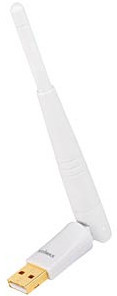Table of Contents
GCA-Pi05 G-Loco Controller


 Content → Command Stations → RocNet
Content → Command Stations → RocNet
-
-
- GCA-Pi01 | Pi01CAN | GCA-Pi02 | GCA-PI03 | GCA-PI04 | GCA-Pi05 | GCA-Pi06 | GCA-PI07 | GCA-PI08 | GCA107 Relay board | RocDisplay | Fast Clock
| Discontinued, and no longer available. |
Description
The RocNetNode supports Mobile commands for controlling the GCA-Pi05.
The GCA-Pi05 is designed for gauge G locomotives with enough room to hold a RasPi/Pi05 sandwich.
The Raspberry Pi communicates by WiFi.
Startup of Rasberry Pi is not like a normal DCC locdecoder, it takes approx 8-10 seconds.
Therefore, also a small 6 Volt Accubattery should be mounted inside the loc.
The power supply will also take care for charging the battery and switch it off if for a longer period no power is available from the track.
Features
- RFID reader for reporting scanned tags between the tracks; Sensor by ID.
- 4A Motor PWM output: GPIO 22 and 7-8 for direction.
- 2 Smoke generator channels: 7-8.
- 6 light PWM channels direction dependent: 9-14.
- 6 Servo channels: 1-6.
- 2 general channels: 15-16.
- Sounds from SD-Card.
- Hall sensor for controlling the drive wheel speed.
Loco address
-
- Bus → 0
- Address → RocNetID
Motor setup
The motor PWM frequency is about 100Hz.
The maximal duty cycle can be set as percentage in the steps field; 100% is maximal.
Acceleration can be set in the mass field: 1=10ms, 10=100ms, …
The number of internal speed steps is fixed at 100 and is spread over the maximal duty cycle set in the steps field; For max. duty cycle of 50% the number of decoder steps must be set to 50.
Sensor setup
The reported RFID must mach with a Sensor-ID in Rocrail.
This sensor should have its address set to zero.
The ID must be set in this notation: RFID Notation
The Rocrail traces can be used to copy this ID or the Sensor Monitor.
WiFi

The RasPi needs a good WiFi USB-Stick to get a stable connection.
In the test environment an EdiMax EW-7711UAn is used. (€10)
The EdiMax Nano can not be used.
Hardware
| Schematic of controllerboard |
| Schematic of addional power supply board |
| The prototype pc-board |
| The bill of materials |
| Adafruit PCA9685 |
| N.B. Only complete ordered kits will be supported! |
|---|
Locomotive
For this example a USA Trains EMD GP7 has been used.

- Max. 65 MPH (104 KM/H)
- Drive wheel diameter is 28mm; One rotation is 88mm.
RPM Control
Magnets
Hall Sensor
The Hall sensor can be tie-wrapped on a small piece of PCB which fits beside the gear-wheel in the gear-box of one truck.
After the sensor have been bent in the optimal position it can be fixated with some hot glue.
The Hall sensor will generate three times a pulse for every wheel rotation.
 |  |
| Position for the PCB board. | Mounted PCB. |
 | |
| another way to mount the hallsensor on the other side of the housing |
| DC Voltage | Hall Freq. | Rotations | Scale speed |
|---|---|---|---|
| 2V | 3Hz | 1 | 10 kmh |
| 6V | 10Hz | 3.33 | 35 kmh |
| 12V | 22Hz | 7.33 | 67 kmh |
| 18V | 33Hz | 10 | 100 kmh |
RFID Reader
The RFID reader can be mounted in the Cylinders (19). Or alternatively in the tank. (20)

The ID-12LA in combination with glass responders is fast enough for this gauge.
Motor distortion
The motors usually are spreading a lot of distortion, which is suppressed mostly on the controller board or decoder.
But the rather long lines to the motor still spread a lot of this distortion,
and in that way making a good functioning of the RFID sensor rather impossible.
One good solution is using VDR resistor (plain 30V type) , mounted directly on the motor connections.
This actually cured my RFID problem.
Picture below shows one of the VDRs mounted.

Videos
- Test track at the MGV club in Venlo
The ID-12LA is fast enough. There is no digital signal on the tracks; Only a AC power supply.





